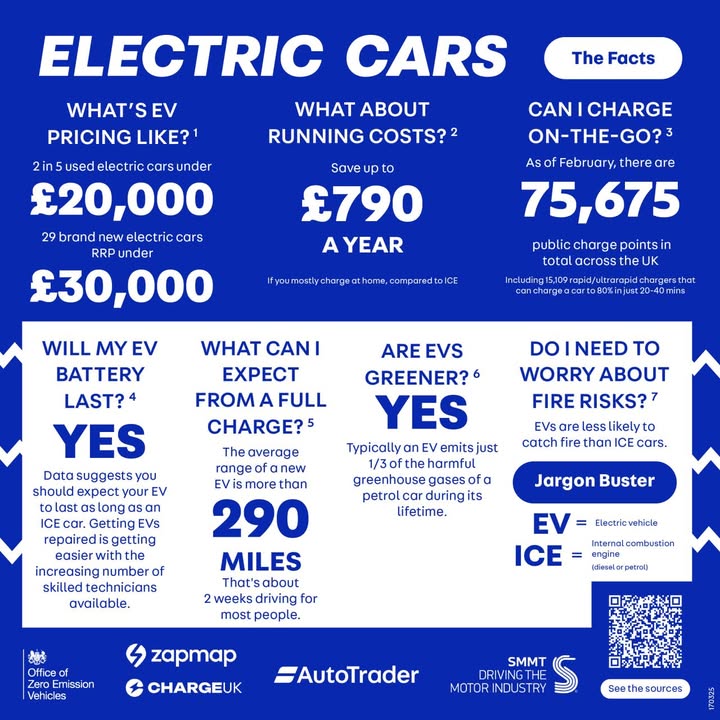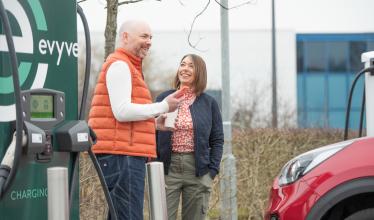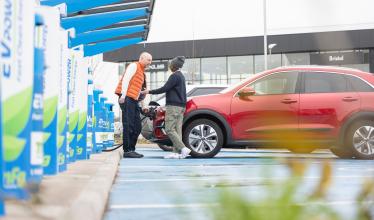Electric vehicles (EVs) are surrounded by numerous common misconceptions and EV myths that can often confuse potential drivers. Whether it's about emissions, range, charging infrastructure, or costs, these myths can deter people from making the switch to electric. This guide aims to bust these EV myths with facts, data and analysis. If you’re looking for clarity and a factcheck on the most persistent EV misconceptions, read on.
1. Myth: EVs pollute more than internal combustion engine (ICE) cars
Reality: One of the most persistent EV myths is that electric vehicles generate more overall pollution than traditional Internal Combustion Engine (ICE) cars, due to emissions related to battery manufacture and electricity generation. However, this is a misconception.
While the manufacturing of EV batteries does create a higher initial carbon footprint compared to building an ICE vehicle, this difference is quickly offset once the EV starts running on the road. According to the International Council on Clean Transportation, an EV pays off its initial ‘carbon debt’ within approximately 11,000 miles when driven in Europe. Beyond that point, its total lifetime CO2 emissions are roughly 68% lower than those of an average petrol car.
A 2023 analysis by Carbon Brief demonstrated that a Tesla Model Y driven in the UK would pay off its carbon debt after about 13,000 miles, producing 14 tonnes of CO2 over 14 years compared to 45 tonnes from an average petrol car - a significant reduction. EVs are more energy efficient because they convert electrical energy to movement much more efficiently than ICE vehicles convert fuel.
2. Myth: Charging an EV when electricity is made by burning gas makes no sense
Reality: Thanks to increased renewable energy production, charging an EV is greener than ever. In early 2023, more UK electricity came from wind farms than from gas. In May 2024, 55% of electricity was from zero-carbon sources. According to Zapmap findings from our annual survey of thousands of EV drivers, 80% of EV owners use off-peak, renewable electricity tariffs for home charging. This fact alone helps bust the myth that EV charging relies heavily on gas or coal, or just moves emissions from the tailpipe to the power station.
3. Myth: There aren’t enough chargers
Reality: This is a common misconception about EV charging. The latest Zapmap data as of January 2025 shows 74,611 public charging points across the UK. There are 14,711 rapid and ultra-rapid chargers, across 5,920 locations. The industry is committed to expanding this infrastructure further, with billions of pounds committed for future investment, which helps dispel the EV myth that there aren’t enough chargers.
Working with partners, Zapmap has developed reports and new measures to assess the UK’s charging infrastructure rollout, including ‘Are we nearly there yet?' alongside CENEX and Vauxhall, and our work with Field dynamics and Ordnance Survey to showcase the significant progress in the installation of EV charging infrastructure across Great Britain.
For detailed stats, visit Zapmap’s EV stats page.
With over a decade of EV usage and millions of electric miles driven, electric vehicles have proven their reliability and sustainability, and are a joy to drive.
This is just a selection of the myths that are debunked in FairCharge’s excellent Little Book of EV Myths, which Zapmap is proud to have contributed our data and insights to - see the full list here.

Zapmap also contributed data and analysis to a collection of user-friendly, simplified facts that offers a more balanced and data-backed view of the reality of owning and driving electric cars, endorsed by the Department for Transport. Find AutoTrader's 'Electric cars: Facts and figures' here.

Organisations like Zapmap, FairCharge, Electric Vehicles UK, Autotrader, EVA England and others are working to combat the wave of media FUD (Fear, Uncertainty, & Doubt) and myths related to EVs that have been circulating in the UK for the last few years.
Zapmap provides independent factual information on the growth, utilisation, reliability, and pricing of the UK’s charging network. This has a twin objective of giving new and established electric car drivers the confidence to charge their EVs on the public network and also arming businesses with the information they need to plan the transition to electric cars.



